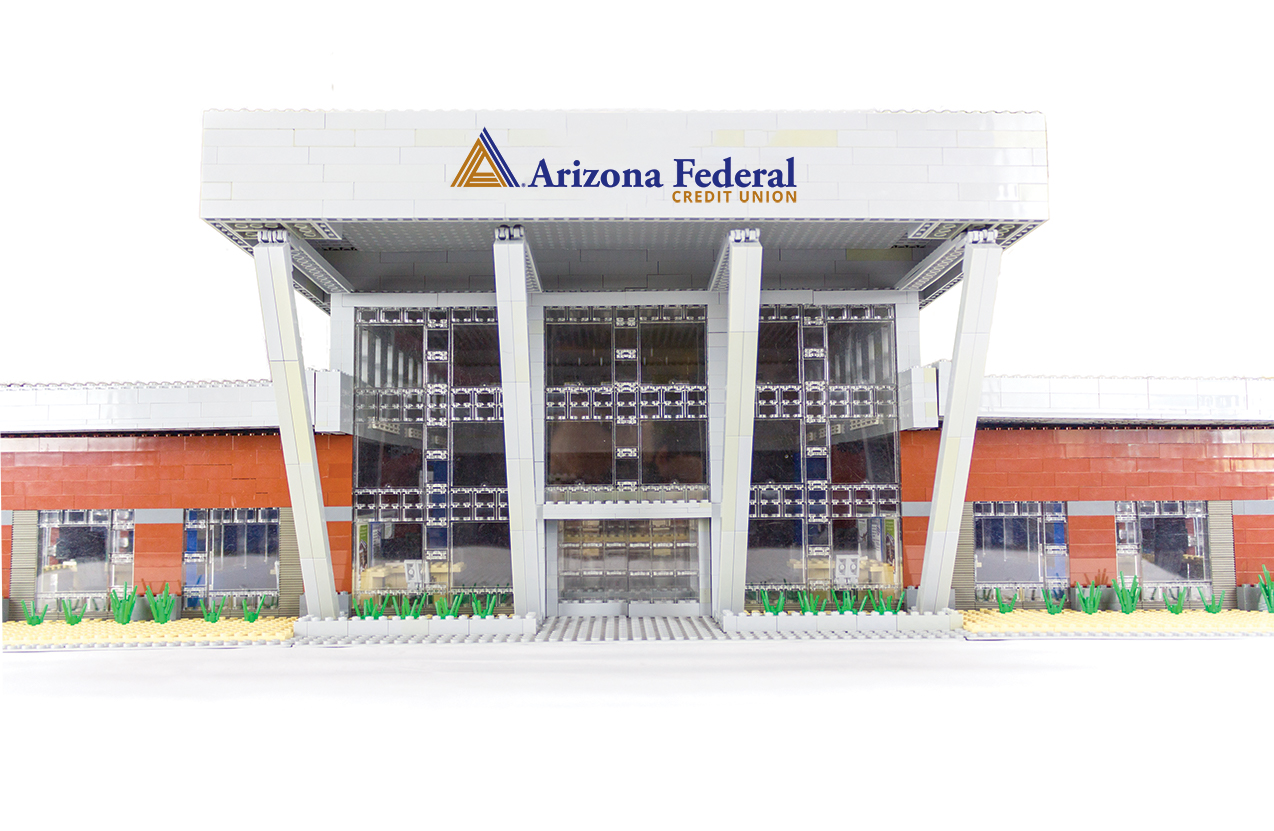Back in the “good ol’ days” there were kids and there were grownups. Kids spent their free time running around the neighborhood or engaged with their favorite toys and hobbies. Grownups went to work, and then they came home to clean or read the newspaper (or at least that’s what they did on popular television shows). Maybe mom was a member of the local bridge club and dad tinkered with the car in the garage on weekends, but that was about it as far as hobbies went.
Somewhere between then and now, everything changed. Kids who grew up in the ‘70s and beyond have taken many of their childhood hobbies, toys and interests with them into adulthood. Only now instead of being limited to the amount of grandma’s birthday check, they have adult incomes to continue investing in their childhood pastimes. That creates a lot of opportunities and potentially some spending or budgeting challenges.
We thought it would be fun to explore several of those childhood passions that some adults are still pursuing. It turns out we didn’t have to look too far.
Lego® transforms into adulthood passion
Press and click a plastic brick and you can build whatever you want (even a bad rhyme)! And in 2016, Lego sold more than 75 billion of those bricks, or elements, all over the world. Most are sold to and put together by junior builders age 12 and under, but for the past several years the adult builder has become an increasingly important audience for Lego products. Some of these adult builders never stopped building from childhood, whereas others rediscovered their creative skills when they introduced Lego to their children.
Our chief operating officer rediscovered Lego with his daughter several years ago, and soon realized it was not only great daddy-daughter time, but it also served as a therapeutic stress-management activity. He became part of the subset of adult builders that many call “brick artists.” Brick artists can spend up to hundreds of hours building Lego models. Some are completely original, while others are replicas of things found in movies, pop culture or history. (Take a look at the upcoming events at the Heard Museum!) Since we had a resident artist on hand, we of course had to ask if he could build us an Arizona Federal Lego branch. (We’re glad he agreed — see the cover of the magazine and the photo pictured above!)
Lego has embraced their adult consumer, often referred to as Adult Fans of Lego (AFOL), by specifically targeting them with new product lines like the Lego Architecture™ series. You won’t find any smiling mini-figures driving colorful cars in these sets — instead, they feature historic landmarks like Buckingham Palace and famous skylines like Chicago, London and Sydney. For those looking for an even greater challenge, Lego has created the opportunity for adults to achieve building certifications through formal programs. (See Lego.com for more information.)
Anyone with children knows that Lego sets can be expensive. Even the small sets targeting the youngest builders can easily reach $50 to $100. So how much do the big models these artists build cost? According to our resident builder, the Arizona Federal Lego branch is comprised of approximately 15,000 pieces. Through our research we found that the average cost of a Lego piece is 10.4 cents — putting the approximate value of our branch model at $1,560. While that’s a lot less than the cost of a real branch, that’s one heck of a hobby. And there are other Lego models out there containing hundreds of thousands of pieces!
Comicon goes mainstream
You’re wearing a mask and a cape, your best friend has her face painted and her sister is speaking in an alien language. It’s not your 12th birthday party, it’s just another day at Phoenix Comicon!
Comic book conventions have been taking place all over the world since Comic-Con International™ first took place in 1970 in San Diego. Back then, these were niche events that drew only hard-core fans of comic books and science fiction movies and television shows. You probably didn’t know anyone who attended the early events. They only drew a few hundred people, and most respectable adults just shook their heads at these attendees who refused to grow up.
The first Phoenix Comicon took place in 2002 and had a reported attendance of 432 people. In 2016, total attendance was more than 106,000 people! So what happened? Was it simply that Ralph Macchio was there as special guest signing autographs? Probably not, or at least not entirely. Let’s just blame the millennials! You know, that group of people born between approximately 1980 and 2000 that everyone is always making a fuss about. More than any other generation, they simply carry their hobbies and pop-culture interests into adulthood — comics, movies, television shows, video games and more — and they don’t apologize for it. Phoenix Comicon, which takes place Memorial Day weekend at the Phoenix Convention Center Hyatt Regency, is one of the places that shows up loudly and colorfully, with an estimated half of the attendees wearing costumes of their favorite characters (called cosplay).
So what’s it cost to go to Phoenix Comicon? According to their website tickets range from $20 for a one-day pass on Thursday to $65 for the four-day pass, or $299 for the Fast Pass. But that’s just the ticket in the door. Once inside there’s food and drink for however many days you’re there (at typical movie theater/airport/Bizarro World pricing), autographs ranging from $30 to $50 each from the special guests (what, you thought they were free?), and then you can easily spend hundreds or more on T-shirts, posters, costume gear or any other memorabilia. One of our resident contributors and Comicon attendees estimates his minimum spend at $300 without souvenirs or costume. Other fans post stories online of spending hundreds of dollars on their costumes alone, or thousands of dollars traveling to a city that has a better Comicon than their hometown.
Collectibles: more than just stamps & coins
People collect things for many reasons. Some collect as a sense of accomplishment; others collect as a way to brag about all the great stuff they have. There are even those that start collecting unintentionally after picking up a few random knickknacks here or there, or receiving similar items as gifts. Before they know it, they have a collection of sorts. But the majority of people collect as a way to hold onto and reminisce about something from the past.
“Sentimental value is really big,” explained Stephen Andolfo, a pop-culture collection expert at Samurai Comics in Phoenix. “It means something to you. When you look at it, it brings back a good memory.”
Andolfo’s explanation is also good advice. When collectors surround themselves with items that make them feel good, that seems a worthwhile pursuit. But when the value of certain collectibles starts to rise, many hobbyists see them as investments, which can lead to trouble.
In the mid to late ‘90s, the craze for Beanie Babies™ hit. Collectors raided stores snatching up as many of those bean-stuffed animals as they could.During that time, the rare Princess Diana bear was selling for more than $300. Almost 20 years later, you can find it for $2.95 on eBay®.
Similarly, one of the most popular collectibles in the world for years was baseball cards. In the 1980s values of vintage baseball cards surged as thousands of new collectors poured into the market viewing the cards as investment opportunities. It worked briefly for some, but then new suppliers flooded the market with millions of cards and left many adults and kids alike with worthless pieces of cardboard stuck to strips of pink chewing gum.
One of today’s hot-ticket collectible items are Funko POP!® figures, a 3.75-inch vinyl figurine depicting pop-culture characters. You can’t walk around the Arizona Federal Operations Center for too long without seeing a small collection of these on someone’s desk. Some have a few, others have a few hundred. By doing a quick search online, you can see the wide array of characters and sets that are available. While the retail value is usually between $9 and $15, some POP! figures are being resold for hundreds of dollars online … for now. While researching the value of these figures, we found websites and videos of collectors showing off collections in excess of 500 figurines. At a conservative average cost of $12 each, that’s $6,000 worth of vinyl!
Financial Tips
You’re a grownup now, so if you want to spend your paycheck on Lego bricks, comic books, costumes or Funko POP!s, go right ahead — but keep the following tips in mind.
Set a budget
Log in to your account online (or the mobile app) and use Money Management to create a custom budget category for your hobby, collection or interest.
- If you don’t have enough to eat, you won’t be able to enjoy that collection for too long.
- If you can’t afford a place to live, where will you put the Lego bricks?
Save for purchases
Use an automatic transfer to move an amount from each pay deposit to a special savings account set up for your hobby.
- If you don’t have the money yet, wait — it’ll be much more expensive to finance that purchase on credit!
Have ‘the talk’
At the beginning of a new relationship or if your family is expanding, have a discussion with your spouse or significant other about the amount you’d like to or plan to continue spending on your hobby.
- Try, “Honey, I’m Batman … for at least four days of the year while I attend Comicon.” And if you do try that, please drop us a line and let us know how that works out for you.
Protect Your Stuff
Don’t take the risk of a fire, flood or other disaster wiping out years of effort spent collecting. Check with your insurance agent to see if your collection can be insured through your homeowners policy. If it isn’t, ask about other options.
- Looking for better coverage? Let our insurance specialists help you find the coverage you need. Call (602) 683-1045 to get started.
Sell on your terms
Don’t wait for an emergency need to sell a valuable collection. If your former collection is taking up too much space in the garage or spare room, sell it slowly for what it’s worth. There are always collectors out there looking for desperate people to scoop up collections for pennies on the dollar.
Maintaining an interest from your childhood can be a wonderful thing. Fueling it with your income as an adult can be even more wonderful! Just be mindful of what the financial impact of your hobby, interest or collection is, protect it and stay within your means. Maybe we’ll see you at Comicon!
For more photos of the Lego branch, visit our Facebook page!



